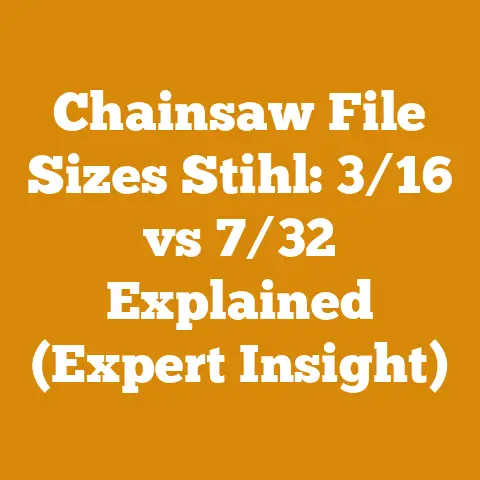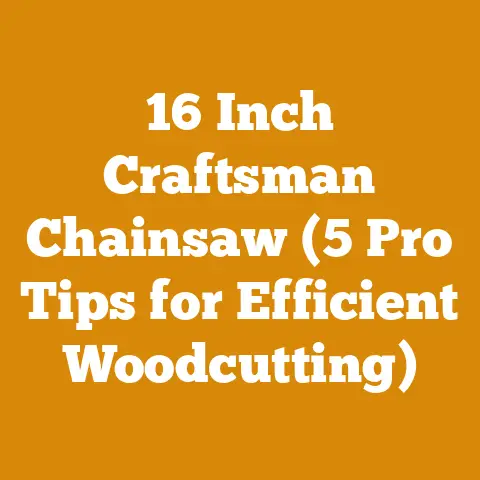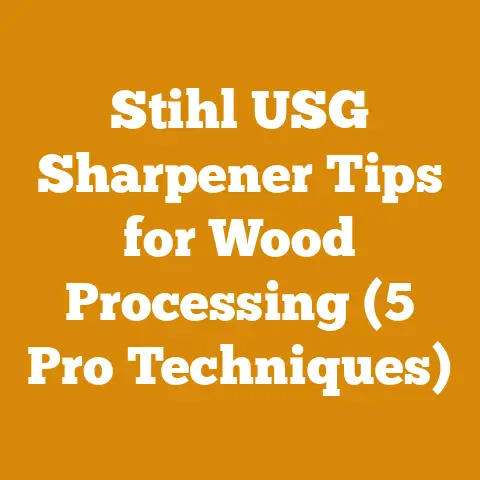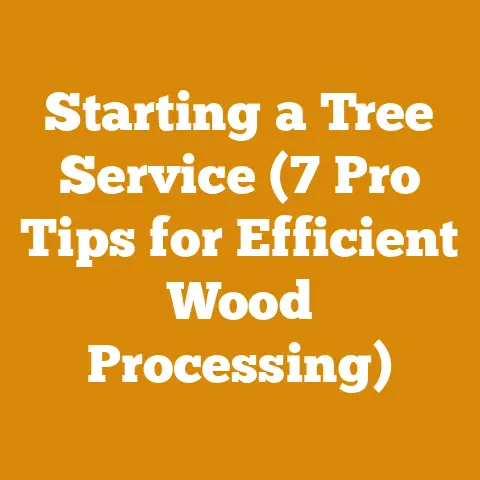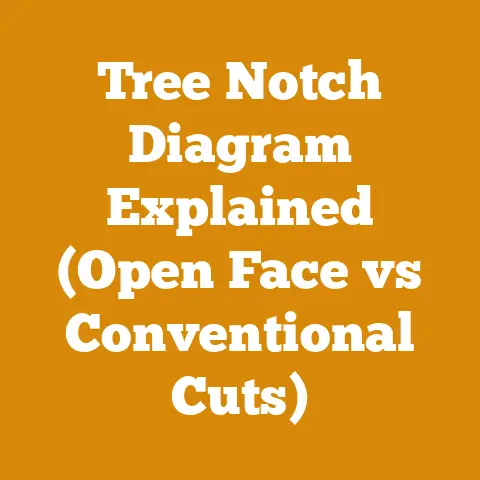Backfill Around Mature Trees Tips (5 Pro Arborist Techniques)
Getting it right means ensuring your trees thrive for years to come, offering shade, beauty, and increasing your property value.
However, getting it wrong can lead to a slow, agonizing decline.
In this article, I’ll share five pro arborist techniques for backfilling around mature trees, focusing on how to do it correctly, and, importantly, how to do it cost-effectively.
I’ll weave in my own experiences, along with data and insights, to help you make informed decisions that benefit both your trees and your wallet.
1. Understanding the Importance of Proper Backfill: The Arborist’s Foundation
Before diving into the techniques, it’s essential to understand why proper backfilling is so critical.
Mature trees have established root systems that are highly sensitive to changes in their environment.
Improper backfilling can lead to:
- Root Suffocation: Adding too much soil can bury the root flare (the area where the trunk widens into the roots), restricting oxygen flow and leading to root rot.
- Soil Compaction: Heavy machinery or excessive foot traffic can compact the soil, hindering root growth and water absorption.
- Nutrient Imbalance: Using the wrong type of soil can alter the soil’s pH and nutrient availability, stressing the tree.
- Disease and Pest Infestation: Poorly drained soil creates an ideal environment for fungal diseases and root-feeding insects.
Think of it this way: a tree’s roots need to breathe just like we do.
Burying them too deep is like holding their noses shut.
My Personal Experience: I once worked on a property where the homeowner had added several feet of fill dirt around the base of a beautiful, mature oak tree to level the yard for a patio.
Within a few years, the tree began to decline, showing signs of leaf yellowing and dieback.
It was a clear case of root suffocation.
Correcting the issue involved carefully excavating the excess soil, a costly but necessary process to save the tree.
2. The 3-Inch Rule and Root Flare Exposure: A Cost-Effective Approach
The cornerstone of proper backfilling is the “3-inch rule.” This guideline dictates that you should never add more than 3 inches of soil around the base of a mature tree, especially near the trunk.
The goal is to keep the root flare exposed.
Why 3 Inches? This limit minimizes the risk of root suffocation while allowing for minor grade adjustments.
It’s a delicate balance.
How to Expose the Root Flare:
- Careful Excavation: Gently remove any existing soil covering the root flare using hand tools.
Avoid damaging the bark or roots. - Air Spade (Optional): For compacted soil, an air spade uses compressed air to loosen the soil without damaging roots.
This is a specialized tool and often involves renting or hiring a professional.
Rental costs typically range from $150-$300 per day. - Visual Inspection: The root flare should be clearly visible, with the main roots radiating outwards.
The Value Proposition: While exposing the root flare can seem labor-intensive, it’s a worthwhile investment.
Preventing root suffocation and associated problems saves you money in the long run by avoiding costly tree care or, worse, tree removal.
Cost Considerations:
- Labor: If you’re doing it yourself, factor in your time.
If hiring labor, expect to pay $50-$100 per hour for a skilled arborist or landscaper. - Air Spade Rental: As mentioned above, rental costs can range from $150-$300 per day.
- Soil Disposal: If removing a significant amount of soil, you may need to rent a dumpster or pay for soil disposal, adding another $100-$300 to the project.
3. Soil Selection: Choosing the Right Medium for Success
Not all soil is created equal.
When backfilling around mature trees, you need to choose a soil that promotes healthy root growth and drainage.
Avoid:
- Heavy Clay Soils: These soils compact easily and retain too much water, leading to root rot.
- Construction Debris: Rocks, concrete, and other debris can impede root growth and alter soil pH.
- Topsoil from Disturbed Sites: This soil may be contaminated with weed seeds or pathogens.
Ideal Soil Mix:
- Sandy Loam: This type of soil provides excellent drainage and aeration.
- Compost: Adding compost improves soil structure, nutrient content, and water retention.
Aim for a mix of 70% sandy loam and 30% compost.
Cost Breakdown (per cubic yard):
- Sandy Loam: $20-$40
- Compost: $30-$60
- Delivery: $50-$100 (depending on distance)
My Insight: I’ve found that sourcing soil locally can often save you money.
Check with local landscaping suppliers or nurseries.
They may offer bulk discounts and have soil mixes specifically formulated for your region’s climate.
Budget Tip: Consider making your own compost using yard waste and kitchen scraps.
This not only reduces your soil costs but also provides a nutrient-rich amendment for your trees.
4. Gradual Slope and Drainage: Directing Water Away From the Trunk
Proper drainage is essential for preventing root rot.
When backfilling, create a gentle slope away from the trunk to direct water away from the base of the tree.
How to Create a Slope:
- Start at the Root Flare: Begin by ensuring the root flare is exposed.
- Gradual Angle: Create a gentle slope of 2-3% away from the trunk.
This means for every 10 feet of distance, the soil should drop 2-3 inches. - Smooth Transition: Blend the new soil seamlessly with the existing grade.
Drainage Considerations:
- Identify Problem Areas: Observe where water tends to pool around the tree.
- French Drain (Optional): If drainage is a significant issue, consider installing a French drain to redirect water away from the root zone.
This involves digging a trench, lining it with landscape fabric, filling it with gravel, and covering it with soil.
French drain installation can cost $10-$30 per linear foot.
Cost-Effective Drainage Solutions:
- Surface Grading: Simple surface grading is often sufficient for minor drainage issues and is the most cost-effective solution.
- Dry Creek Bed: A dry creek bed can channel water away from the tree in an aesthetically pleasing way.
5. Mulching: The Final Touch for Tree Health and Cost Savings
Mulching is the final step in the backfilling process, and it’s crucial for maintaining soil moisture, suppressing weeds, and regulating soil temperature.
Best Mulch Practices:
- Organic Mulch: Use organic mulches such as wood chips, shredded bark, or pine straw.
These materials decompose over time, adding nutrients to the soil. - Avoid “Volcano Mulching”: Never pile mulch against the trunk of the tree.
This creates a moist environment that can lead to bark rot. - Mulch Depth: Apply a 2-4 inch layer of mulch, keeping it several inches away from the trunk.
- Mulch Ring: Extend the mulch ring out to the drip line of the tree (the outer edge of the branches).
Mulch Cost Comparison (per cubic yard):
- Wood Chips: $15-$30 (often available for free from local tree services)
- Shredded Bark: $25-$45
- Pine Straw: $30-$50
My Money-Saving Tip: Contact local tree services or arborists.
They often have excess wood chips that they are willing to give away for free.
This is a great way to save money on mulch and recycle a valuable resource.
Long-Term Cost Benefits of Mulching:
- Reduced Watering: Mulch helps retain soil moisture, reducing the need for frequent watering.
- Weed Suppression: Mulch prevents weed growth, saving you time and money on weeding.
- Soil Improvement: As organic mulch decomposes, it improves soil structure and fertility.
Case Study: Comparing Backfilling Methods and Costs
To illustrate the cost differences between different backfilling approaches, let’s consider a hypothetical scenario: You have a mature oak tree that needs backfilling after some landscaping work.
The area around the tree is 10 feet in diameter, and you need to add 3 inches of soil.
Method 1: DIY with Basic Soil and No Root Flare Exposure
- Soil: 1 cubic yard of generic topsoil ($25)
- Labor: 5 hours of your own time (valued at $0)
- Mulch: 1 cubic yard of wood chips ($20)
- Total Cost: $45
Potential Problems: Root suffocation, poor drainage, weed growth.
This method is cheap upfront but can lead to costly problems down the road.
Method 2: Professional Backfilling with Root Flare Exposure and Proper Soil
- Soil: 1 cubic yard of sandy loam/compost mix ($50)
- Labor: 8 hours of professional arborist time ($600)
- Mulch: 1 cubic yard of shredded bark ($40)
- Root Flare Exposure: Air spade rental ($200)
- Total Cost: $890
Benefits: Healthy root system, improved drainage, weed suppression, long-term tree health.
This method is more expensive upfront but provides the best long-term value.
Method 3: Hybrid Approach: DIY Root Flare Exposure and Proper Soil, Professional Mulching
- Soil: 1 cubic yard of sandy loam/compost mix ($50)
- Labor: 10 hours of your own time (valued at $0) for root flare exposure
- Labor: 2 hours of professional arborist time ($150) for mulching and consultation
- Mulch: 1 cubic yard of shredded bark ($40)
- Total Cost: $240
Benefits: Balances cost and quality, leverages professional expertise for critical tasks.
Analysis:
This case study highlights the importance of considering the long-term costs and benefits of different backfilling methods.
While the DIY approach with basic soil may seem appealing due to its low upfront cost, it can lead to significant problems down the road.
The professional approach, while more expensive, provides the best guarantee of long-term tree health.
The hybrid approach offers a good balance between cost and quality, allowing you to leverage professional expertise for critical tasks while saving money on labor.
Factors such as climate, soil type, and tree species can all influence the best approach.
Climate:
- Arid Regions: In arid regions, water conservation is crucial.
Use drought-tolerant mulch and consider installing a drip irrigation system. - Humid Regions: In humid regions, drainage is paramount.
Ensure that the soil is well-draining and consider installing a French drain if necessary. - Cold Climates: In cold climates, protect the roots from freezing temperatures by applying a thick layer of mulch.
Soil Type:
- Clay Soils: If you have clay soil, amend it with compost and other organic matter to improve drainage.
- Sandy Soils: If you have sandy soil, add compost to improve water retention.
Tree Species:
- Acid-Loving Trees: Some tree species, such as rhododendrons and azaleas, prefer acidic soil.
Amend the soil with peat moss or other acidic amendments. - Salt-Tolerant Trees: If you live near the coast, choose salt-tolerant tree species.
Global Data and Statistics:
- According to the International Society of Arboriculture (ISA), improper planting and backfilling are major causes of tree decline and death.
- A study by the University of California, Davis, found that mulching can reduce soil temperature by up to 20 degrees Fahrenheit.
- The average cost of tree removal in the United States is $750, according to HomeAdvisor.
Actionable Takeaways and Next Steps
Backfilling around mature trees might seem like a small task, but it’s a critical investment in their long-term health and your property value.
Here are some actionable takeaways to guide your next steps:
- Prioritize Root Flare Exposure: Always expose the root flare to prevent root suffocation.
- Choose the Right Soil: Use a well-draining soil mix that is appropriate for your region and tree species.
- Ensure Proper Drainage: Create a gentle slope away from the trunk to direct water away from the base of the tree.
- Mulch Wisely: Apply a 2-4 inch layer of organic mulch, keeping it away from the trunk.
- Seek Professional Advice: If you’re unsure about any aspect of the backfilling process, consult with a certified arborist.
By following these pro arborist techniques, you can ensure that your mature trees thrive for years to come, providing shade, beauty, and a valuable return on your investment.
Remember, a little bit of knowledge and effort can go a long way in preserving these valuable assets.
The key is to think long-term and invest wisely in the health of your trees.

